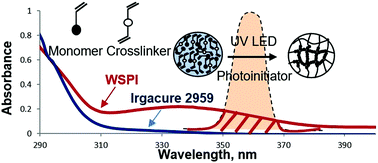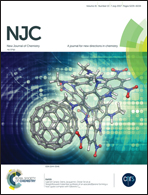New UV LED curing approach for polyacrylamide and poly(N-isopropylacrylamide) hydrogels
Abstract
When a UV LED was used, the energy generated from its light source triggered photopolymerization to directly convert acrylamide and N-isopropylacrylamide monomers to polyacrylamide and poly(N-isopropylacrylamide) hydrogels, respectively. As compared to UV mercury lamps, a UV LED has more concentrated energy at its monochromatic wavelength (i.e. 365 nm), which can offer more efficient photopolymerization. In this study, a feasible photoinitiator was synthesised in parallel with the development of a UV LED water based hydrogel curing system. This is because the commercially available water soluble photoinitiator has no overlap in emission with the absorption wavelength of the UV LED. The water soluble photoinitiator (WSPI) was obtained from complexation of 2,2-dimethoxy-2-phenyl acetophenone and methylated-β-cyclodextrin. The results presented in this work suggested that WSPI was an excellent choice of photoinitiator for the UV LED system to achieve hydrogels with high monomer conversion (>90%). These findings give a promising alternative for hydrogel curing in various applications, including contact lenses and dental materials.



 Please wait while we load your content...
Please wait while we load your content...